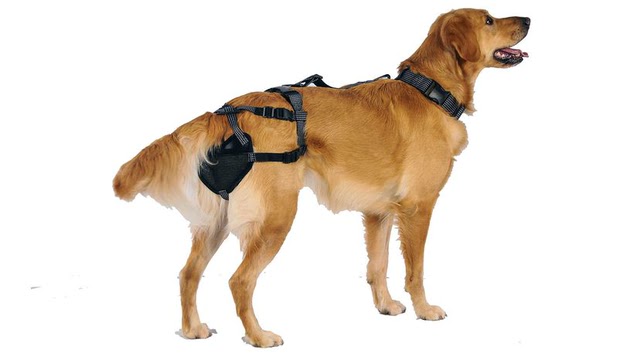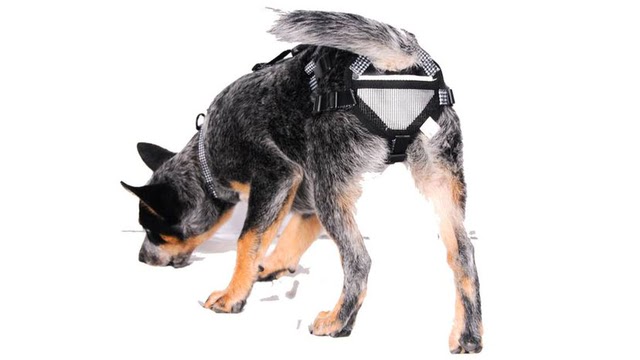Quck answer
Dog chastity belts are a controversial alternative to spaying and neutering. While they prevent unwanted pregnancies, they do not address the health benefits of spaying and neutering, such as reducing the risk of certain cancers. Chastity belts can also cause discomfort, irritation, and infections if not properly fitted or worn for extended periods. Some people argue that training and supervision are better alternatives to prevent unwanted breeding, while others believe that spaying and neutering are the safest and most effective methods. Ultimately, the decision to use a dog chastity belt should be made after consulting with a veterinarian and considering all options.
Pets

As pet owners, we go to great lengths to ensure our dogs are happy and healthy. We treat them like family, splurging on lavish birthday parties and even sending them to daycare. According to recent statistics, Americans spent over $103 billion on their pets in 2020 alone, with a significant portion going towards veterinary expenses like spaying and neutering. However, some pet owners prefer to keep their female dogs intact for longer, turning to natural birth control methods such as dog chastity belts.
Protecting Private Parts
Just when you thought you had heard it all, there is such a thing as a dog chastity belt. Unlike the medieval iron undergarments seen in Mel Brook’s “Robin Hood: Men in Tights,” these belts are made from breathable mesh and soft fabric straps with adjustable buckles. Their purpose is to prevent unwanted litters of puppies and safeguard the long-term health of female canines.
Delay Her Spay is a company that offers these belts. Creator Dexter Blanch says the idea came to him when he was on a hunting trip with a friend whose dog unexpectedly went into heat. “That was my eureka moment! I thought, what if there was a barrier between the female and the male that would prevent her from getting pregnant?” Blanch explains. The result was Delay Her Spay, which allows female dogs to go about their daily activities while in heat.
The harness has eight buckles, padded webbing, and mesh, with a strap down the back leading to the chastity belt system that wraps around the dog’s haunches and covers her private parts. While this might seem cumbersome, Blanch assures pet owners that the system is designed to allow the dog to go to the bathroom and clean herself with ease. “She can even clean herself through the mesh while she is wearing it. There’s no mess for the pet parent to clean up. This means the dog can completely be a dog when she is wearing the harness,” he says.

Female dogs can go to the bathroom and clean themselves while wearing the Delay Her Spay harness.
PABS
Why Use a Chastity Belt?
While we are willing to go to great lengths to pamper our pets, it might seem odd to use a chastity belt. However, spaying a female dog is not always a straightforward process, which has led some pet owners to seek alternative methods.
The popularity of early spaying and neutering rose in the ’70s as a preventative measure against the overpopulation of stray dogs in kill shelters. While sustainable population control to keep dogs out of shelters is beneficial, a study published in the Animal Welfare journal in 2019 found that dogs who undergo spaying or neutering are at a higher risk of becoming obese, which can lead to orthopedic injuries. Further research shows that early spaying and neutering may also increase the risk of certain cancers, joint problems, and bladder leakage. However, the risks vary depending on the breed, sex, household conditions, genetics, and temperament of each individual dog.
Although some puppies can experience their first heat as early as 6 months old, most experts believe that a dog’s first cycle is too young for her to get pregnant. Breeders typically wait until the dog is around 2 years old and has had her third heat, according to the American Kennel Club. However, opinions differ, and organizations such as the ASPCA still recommend spaying or neutering a pet at 2 months old or when they reach 2 pounds.
Ultimately, as a pet owner, you must weigh the pros and cons of spaying or neutering your dog. Blanch, an animal welfare advocate, states that he is not against spaying female dogs, but he does recommend waiting until the appropriate time. He advises consulting a veterinarian to determine when that time is.
In other news, some dogs seem to have a better vacation than humans do. A $9 million dog resort offers amenities such as blueberry facials, a heated pool, an in-suite TV, and an air filtration system. Prices start at $50 per night. Can we join our furry friends?
FAQ
1. What are dog chastity belts?
Dog chastity belts are a type of garment for dogs that prevent them from mating. They are usually made of a combination of nylon and cotton and are designed to fit snugly around the dog’s waist. The idea behind them is to provide an alternative to spaying and neutering, which can have negative health effects on dogs.
2. How do dog chastity belts work?
Chastity belts for dogs work by preventing them from mating. They are designed to fit snugly around the dog’s waist and are secured with a buckle or other fastening mechanism. The belt covers the dog’s genital area, preventing them from being able to mate. Some dog chastity belts are also designed to be worn during house training, to prevent dogs from marking their territory inside the house.
3. Are dog chastity belts effective?
There is some debate over the effectiveness of dog chastity belts. While they can prevent dogs from mating, they may not be as effective as spaying or neutering in preventing unwanted litters. Additionally, some dogs may find the belts uncomfortable or restrictive, which can lead to behavioral problems.
4. Are dog chastity belts safe?
When used properly, dog chastity belts are generally considered safe. However, there is a risk of injury if the belt is too tight or if the dog chews through it. Additionally, some dogs may develop skin irritation or other health problems if they are forced to wear the belt for long periods of time.
5. How do I choose a dog chastity belt?
When choosing a dog chastity belt, it is important to choose one that fits properly and is comfortable for your dog. Look for belts made from high-quality materials that are sturdy and durable. You may also want to consider belts that are adjustable, so you can get the perfect fit for your dog.
6. How do I put a dog chastity belt on my dog?
Putting a dog chastity belt on your dog is relatively easy. Simply slip the belt over your dog’s head and secure it around their waist with the buckle or other fastening mechanism. Make sure the belt is snug but not too tight, and that your dog is comfortable wearing it.
7. Can male dogs wear chastity belts?
Yes, male dogs can wear chastity belts. In fact, some male dogs may be more prone to wandering or aggressive behavior if they are not neutered, making chastity belts a good alternative for some pet owners.
8. Can female dogs wear chastity belts?
Yes, female dogs can wear chastity belts as well. However, it is important to choose a belt that is designed specifically for female dogs, as their anatomy is different from male dogs.
9. How long can a dog wear a chastity belt?
It is generally recommended that dogs not wear chastity belts for more than a few hours at a time. Prolonged use can cause discomfort and may lead to health problems. If you need to keep your dog from mating for an extended period of time, it may be a better idea to consider spaying or neutering.
10. Are there any alternatives to dog chastity belts?
Yes, there are several alternatives to dog chastity belts. Spaying and neutering are the most common alternatives, as they are generally considered to be more effective than chastity belts. However, there are also medications and supplements that can help prevent unwanted mating behavior in dogs.
11. Are there any downsides to using dog chastity belts?
While dog chastity belts can be a good alternative to spaying and neutering for some pet owners, there are some downsides to using them. They may not be as effective at preventing unwanted litters, and some dogs may find them uncomfortable or restrictive. Additionally, prolonged use can lead to health problems, and there is a risk of injury if the belt is too tight or if the dog chews through it.





Leave a Reply